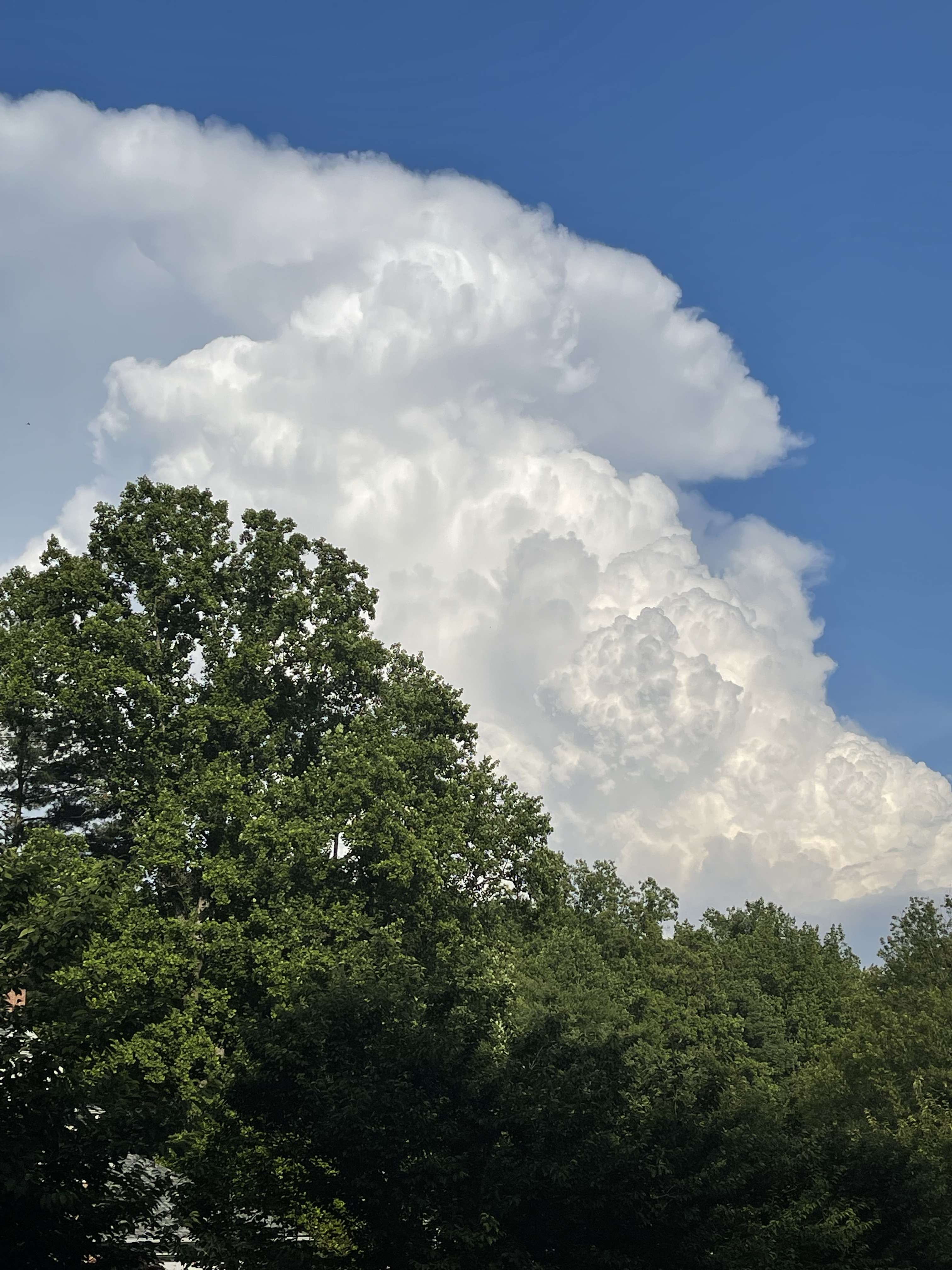-
Posts
44512 -
Joined
-
Last visited
-
Days Won
262
Posts posted by Phil
-
-
So, operational ECMWF schools all the other models again?
Why am I not surprised.
-
La Nina watch re-issued by CPC. 70% chance now... haha http://www.cpc.ncep.noaa.gov/products/analysis_monitoring/enso_advisory/ensodisc.pdf

-
D**n, Bermuda getting crushed this morning..
https://mobile.twitter.com/drnek60/status/786556947638214656
-
That said, both 1971/72 and 1973/74 were both classic Niña/+QBO beauties, though both were strong Niñas as well.
-
A couple that look like losers are still interesting. 2004 for instance...Jan 2005 came very near nailing us big time. Missed by an eyelash. 1991 had an Arctic blast just after the analog date being shown. That was a Nino year of course so the October was the kiss of death for the winter. Many of the others were pure gold.
Weren't 1975/76 and 1956/57 sorta "meh" overall? I know 1975/76 was an unmitigated PV disaster over the NH as a whole.
-
I was just looking at the analogs to the 18z GFS. Some pretty orgasmic winters / seasons in the mix. I expect the 0z ones will be similar.
00z analogs are out. Some epic ones in there, but several losers in there also. Hinges on the latitude of the NPAC ridge.
http://www.cpc.ncep.noaa.gov/products/predictions/short_range/tools/gifs/500hgt_comp_00gfs814.gif
-
 1
1
-
-
Yeah I'm hoping it doesn't curve northward until it's closer to the coastline. Small details will make all the difference.
A deeper low during the earlier stages will occlude faster. A weaker low during the earlier stages will begin that process later.
-
 1
1
-
-
Absolutely gorgeous GOA / Aleutian ridge for week two. It's almost alien to me to actually get what I was hoping for!

I'd like that GOA ridge farther poleward (which I suspect will happen eventually, within the next 6 weeks). Flat Aleutian ridges are dangerous to play with.
-
Love seeing that IO subsidence dominate the ensemble averages in the extended range. Tight, contracted Niña cell boosts WHEM wavenumber and correlates to -EPO/-NAM during D/J/F.
GEFS/CMC Ensembles:
http://www.tropicaltidbits.com/analysis/models/gfs-ens/2016101218/gfs-ens_chi200_global_33.png
http://www.tropicaltidbits.com/analysis/models/gem-ens/2016101212/gem-ens_chi200_global_33.png
-
Speaking of windstorms, Nicole might impact Bermuda as a Cat4 tomorrow. Yikes.
-
It's probably the same for all of us
 . Once the weather gets exciting everyone comes out of the woodwork and is addicted. I swear model riding has to be worse than crack.
. Once the weather gets exciting everyone comes out of the woodwork and is addicted. I swear model riding has to be worse than crack.It's an unhealthy addiction, too. Last winter, I went a week without getting more than 3hrs of sleep a night tracking that blizzard.
Sandy was even worse. I think I pulled two consecutive all nighters.
-
The biggy has been the persistent GOA ridge since mid June. The fact it is slated to return yet again later in the month is extremely encouraging. The persistent SE US ridge is also a very good sign. There are many other favorable things going on also.
The GOA ridge and SE ridge can be summarized within a single function, technically speaking, but the nature of the wavenumber response to various stimuli seems to change seasonally.
Running correlations on both entities (GOA ridge & SE Ridge), there's a decent correlation w/ the GOA state in S/O/N and that of D/J/F. As for the SE ridge, there's very little cross seasonal correlation, which suggests to me that off-domain transference could be in play, regarding the NATL state.
-
Holy sheeit!
The GFS ensemble has the PNA dropping to -4 later in the month while the ECMWF ensemble has it dropping to -3. I am in disbelief how perfectly everything is lining up for a good winter this time. October cold snaps in cold ENSO seasons is about the best sign there is for a cold winter.
What if the -PNA continues/strengthens into November, as it looks to do?
The -EAMT and subsequent NPAC jet retraction next week should get that classic +QBO NPAC high going strong next month.
-
Not sure what, if any, significance this has, but you know how animals/birds can act strange/differently before big storms? Well, I was just doing some yard work and somewhere between 50-70 crows were creating quite a commotion, circling about and making a lot of noise. This lasted for about 3 or 4 minutes, then abruptly stopped... Weird, I always sort of thought crows were solitary creatures...
Weird. Same exact thing happened here (mob of birds) just before hurricane Sandy hit. Didn't think much of it until it happened again before our windstorm last April.
I think there's even some literature on the behavior of birds before cyclones. Haha.
-
 1
1
-
-
Wow that's pretty impressive.
I have a question. I normally don't follow the CFS, but I feel like every time I've seen a CFS outlook it shows widespread way above normal temps. Is it unusual to see so much below normal??
Climate models in general tend to run warm @ the surface, for a variety of reasons, but sometimes can run cold in the subtropics. I'd recommend just observing tendencies in the 500mb heights and ignore surface temperature output altogether. Simulating 2m temperatures just isn't easily done, IMO.
-
Insanity
http://clients.customweather.com/plot_images/client_sites/CW/CFSV2/final_CL001/CL001_2MTEMP_DEP_SEASONAL_E_3.png
Haha, let's do it!
-
Awesome site for tracking worldwide/regional snowfall. I'm watching Eurasia, a there's a slight correlation between October snowcover advance there and cold/blocky western hemispheric winters.
-
 1
1
-
-
I think I mentioned this last night, but the 00z ECMWF was truly a textbook W/S gradient/sting jet, in my opinion. Perfect timing and location of the low within the typical seclusion/occlusion cycle.
Though, mesoscale meteorology isn't my strong suit, so maybe IbrChris or Black Hole can correct me here.
-
 4
4
-
-
IDK. A cold Alaska and mild pacific NW isn't a bad thing in November, is it?
It's not a good cold-season look, if you're a winter weather lover (unless you live in Siberia or Eastern Canada, I guess). Too far out to worry about right now, regardless.
Recent years with such a look in November include 1999/00, 2001/02, 2005/06, 2007/08, and 2011/12. Not exactly the happiest list.
-
Jim's gonna love that.
Could flip around, my thinking is different. Just a trend I've noticed in the recent runs.
I hate playing around with a flat Aleutian ridge (south of the Aleutians) because it's the perfect loading pattern for a +EPO, and promotes a secession of mass/momentum deposition through the NPAC conduit to the zero wind line. An amplified Aleutian ridge is another story especially if it can synchronize with the climatological stratospheric anticyclone over the NPAC and break poleward, like in 2008/09.
-
Not worth much, but the last two runs of the ECMWF weeklies have trended poorly in the long range. Need to get forcing farther east, towards 150E, before the seasonal wavenumber starts declining more significantly.
This looks a lot like 1966 et al. Warm look almost everywhere, except maybe the NE.
http://i724.photobucket.com/albums/ww243/phillywillie/Mobile%20Uploads/B982F60E-FCED-4709-BFD1-3A7091CAF248_zpsyeajb5pi.jpg
-
Looks like I might be moving to the Germantown/Damascus area next summer or fall, in the northern portion of the county. Cheap property values, convenient location, and most importantly, much better weather vs here.

My gf would be working in Gaithersburg while I'd be finishing up school at both the College Park and Gaithersburg Campuses, so it'd be perfect. Would gain between 500ft and 600ft in elevation, which makes a huge difference during winter. Average snowfall would be close to 30", a opposed to the ~20" I currently average. Also get higher wind speeds up there, so the atmosphere is generally better mixed and cleaner overall, especially notable during the summer. The one downfall would be poor radiational cooling at night, but that's a trade-off I'm willing to take.
Summers are slightly cooler, and dewpoints are noticeably lower than here in the swamp. Summer rainfall is higher, as is thunderstorm frequency. All traits I'd love.
-
 2
2
-
-
Made it down to 42º north of Philly in Lansdale. I had to drop off my wife at the airport and the temp was in the mid fifties by the Delaware river.
Same story here. Low of 42 degrees, low 50s in DC.
Gotta love UHI.
-
Yeah... it is very consistent.
Good chance the 12Z ECMWF agrees with it this morning. If not... then we have a very interesting model battle!
FWIW, the ECMWF was on its own w/ the pseudo loop of Matthew, and once again it schooled all the other models, even its own ensemble mean. Sometimes, that model will just lock onto a solution and verify.
-
 1
1
-



October 2016 Observations and Model Discussion for the Pacific Northwest
in West of the Rockies
Posted
I think the ECMWF was closer overall, both in track and timing of the occlusion cycle.
Assuming these trends continue with their present conformation.